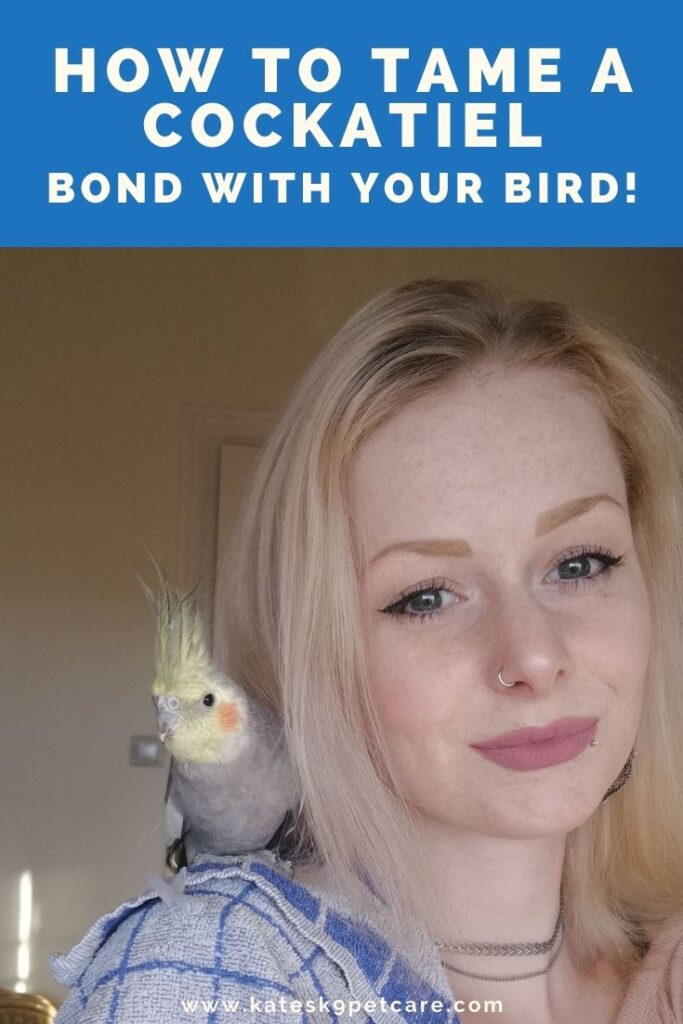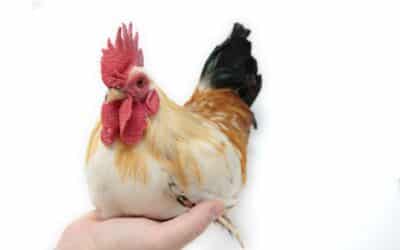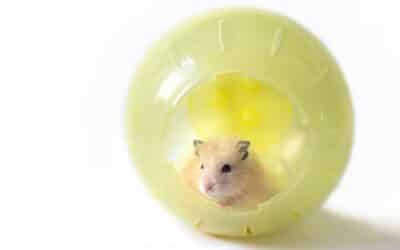
If you’ve recently added a cockatiel (Nymphicus hollandicus) to your family, first of all: good choice! These Australian parrots make truly delightful pets. Right now, though, you might be wondering how to tame your cockatiel. Not all birds are tame when you get them, even those that came from breeders. Rescue birds can be especially hesitant when it comes to human contact.
No worries! Let’s go into how to tame a cockatiel and establish a bond with your bird.
How to tame a cockatiel: What is positive reinforcement?
Whether you’re just trying to bond with an already tame cockatiel or are about to start work with an aggressive and fearful bird, the approach you’ll want to take to taming a cockatiel is the same. We’ll be using positive reinforcement, which involves rewarding your bird if it does something right.
Positive reinforcement is the opposite of negative reinforcement, which is all about punishing the animal if it does something wrong. Punishment-based training should be avoided with pretty much all pets, and birds especially. They’re not really able to connect the punishment with their actions, meaning that if you scold them, they don’t understand why and will interpret it as aggression on your part. Additionally, yelling at a parrot doesn’t work: they love attention and noise and will just think it’s time to party. You may end up actually reinforcing negative behaviors this way!
Your greatest friend in positive reinforcement training is food. Before you start, identify what your cockatiel likes to eat; this can be as simple as its normal daily food. Parrots will sell their soul for a seed, so treats are the way to their heart.
Tip: Aside from positive reinforcement, consider also familiarizing yourself with the concepts of clicker training and target training. They’re immensely useful in training parrots like cockatiels.

How to tame a cockatiel: The first steps
Let’s go ahead and learn how to apply positive reinforcement when taming a parrot like a cockatiel! Remember, you want to REWARD your bird for good behavior and REFRAIN from punishing it for behaviors you deem unwanted, like biting.
Let’s assume we’re starting with a cockatiel that’s frightened of humans and may even nip if it feels threatened, like if you come too close with your hand. Your bird may already be further along the journey than this, though.
- Step 1: Getting to know each other. Your bird may not have had much human contact if it was parent-raised at a bird farm in an aviary. It’s likely not sure whether you’re going to eat it or not. So, let’s start at the beginning and let your ‘tiel size you up. Take a few days to sit by its cage regularly, talking and eventually moving around, but without seeking contact. While you wait for your bird to warm up to you, why not take the time to read up on cockatiel care to make sure you’re 100% prepared?
- Step 2: Offer food from outside of the cage. Just push a sprig of millet or seed stick through the bars; don’t intimidate your bird by sticking your hand inside the cage just yet. Be patient and try again at another time if the cockatiel is too scared to take the treat at this point. The food will sway it sooner or later. Don’t push things.
With the help of this step, you begin creating a positive association with your presence: whenever you appear, so does food, so you appearing is a good thing! Coming close to you is rewarded with the ability to have a nibble.
- Step 3: Now, this next step works best if you’ve already started letting your cockatiel out of its cage regularly. You’re going to place your hand close to the bird, which is less intimidating for it if it’s not stuck in its cage. If it is, don’t place your hand too close. Put some food in your hand and place it somewhere your bird can see it. Let’s see how long it takes for your ‘tiel to take the bait without the protection of the cage bar barrier!
- Step 4: Step-up training. Good job, you’ve broken the hand barrier, opening up plenty of training opportunities. The most useful is teaching your bird to step up to your hand. You can achieve this by placing your finger or hand between the bird and the treat: if it feels comfortable enough, it will step onto your finger to reach its snack. Combine this with a verbal cue like “step up” and your cockatiel will soon start associating stepping up with a treat. Eventually, it should step up even if a treat doesn’t follow.
In many cases, a parrot will eventually feel comfortable enough to stay on your hand and explore, maybe climbing up to your shoulder to check out a shiny earring or your hair. Offer some more treats and just make it a positive experience. I tend to find with my birds that they end up seeing my shoulder as just another perch to sleep on, and my body as just another place to check out in search of tasty morsels and things to chew.
- Step 5: Continue training. How about stepping down, or flying to you? There are many tricks that are both fun and useful, not in the least because you’re bonding while training. Cockatiels also adore being preened by their flock members, and you can work your way up to giving the bird neck scratches through gently touching its beak and lots of rewards.
Remember, this is not a linear process. It’s important not to rush it. Keep repeating previous steps and remember that sometimes, a bird can suddenly “regress” to a previous step. If your cockatiel seems very uncomfortable at Step 3 all of a sudden, for example, just take a step back and work your way back up to it.
Did you know? As we’ve discussed, you can’t punish your cockatiel if it does something “bad”, like biting. However, you can discourage these behaviors. If your ‘tiel nips at you, definitely don’t give it the treat you were going to offer. In fact, you should just put the bird down and walk away for a while. Sorry birdie, you lost your chance to earn treats for now.
Conclusion
For those frustrated with their bird’s lack of progress and wondering how to tame a cockatiel properly, I’ll leave you with the following. I’ve had chats with a professional parrot trainer who noted that whenever someone contacts them looking for help with their bird, it almost always turns out it’s the owner who needs training, not the parrot!
Humans often try to force it too much, make their parrot uncomfortable without realizing and ignore warning signals to back off, resulting in bites. Parrots like cockatiels can make fantastic pets, but if you want an animal that’s straightforward and always easy to understand, they may not be for you. Leaving the initiative with your bird is the road to success.






